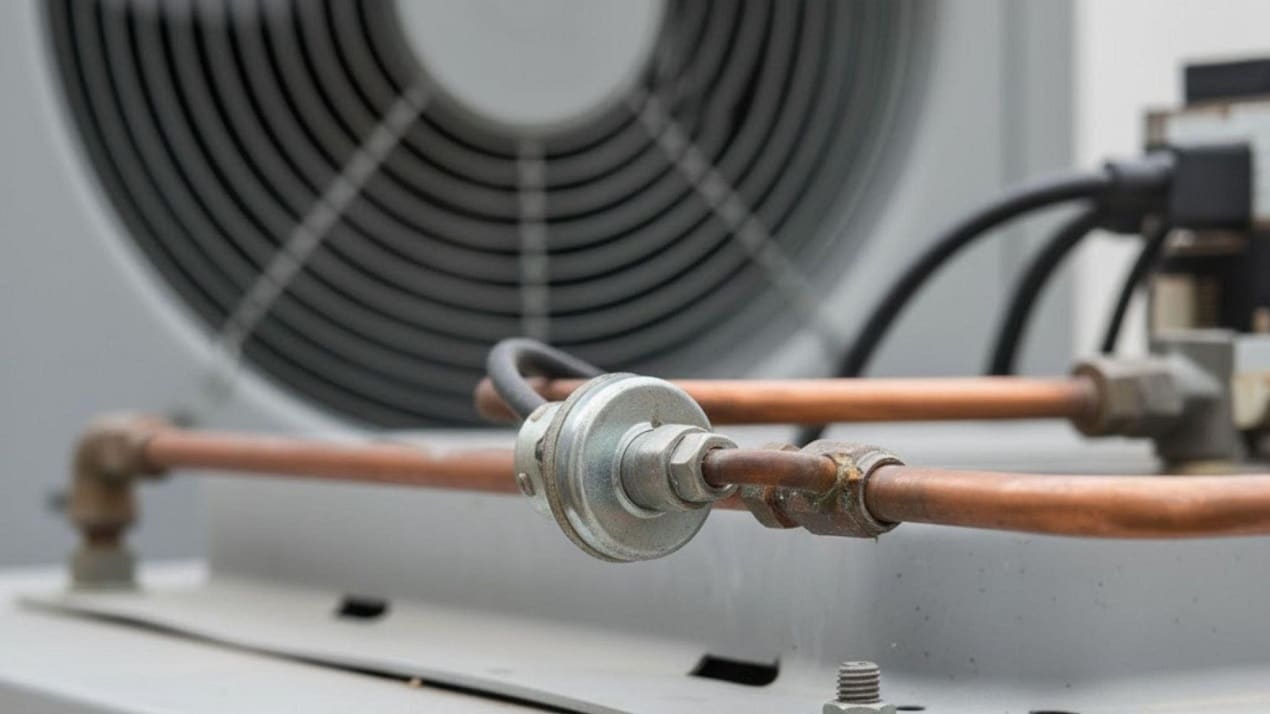Air conditioning systems rely on pressure switches to regulate refrigerant flow and protect the compressor from damage. When these switches fail, the system begins to show clear warning signs. Understanding faulty AC pressure switch symptoms is essential for homeowners who want to maintain comfort and avoid expensive breakdowns.
What Are the Most Common Faulty Ac Pressure Switch Symptoms?
The most noticeable symptom of a faulty AC pressure switch is inconsistent cooling. Homeowners may find that the air conditioner blows warm air even when the thermostat is set to a low temperature. In some cases, the compressor may cycle on and off rapidly, which not only reduces efficiency but also places unnecessary strain on the system. These faulty AC pressure switch symptoms often indicate that the switch is failing to regulate refrigerant pressure correctly.
Another common issue is complete system shutdown. If the switch detects abnormal pressure levels, it may disengage the compressor entirely. While this is a protective measure, a malfunctioning switch can trigger shutdowns even when refrigerant levels are normal. This is why AC low-pressure switch failure and high-pressure switch malfunctions must be addressed promptly.
How Does a Low-pressure Switch Failure Affect the Ac System?
A low-pressure switch is designed to monitor refrigerant levels and prevent compressor damage when refrigerant is too low. When this switch fails, the compressor may continue running without adequate lubrication, leading to overheating and eventual failure. This type of AC low-pressure switch failure can also cause the evaporator coil to freeze, reducing airflow and cooling capacity.
Homeowners who notice ice buildup on refrigerant lines or weak airflow should consider professional inspection. In many cases, technicians will recommend AC Repair Services in Bonita Springs to diagnose and resolve the root cause before the compressor is permanently damaged.
What Role Does the High-pressure Switch Play in Troubleshooting?
The high-pressure switch protects the system from excessive refrigerant pressure, which can occur due to blocked condenser coils, a failing condenser fan, or overcharged refrigerant. When this switch malfunctions, it may shut down the compressor unnecessarily or fail to disengage it when pressure is dangerously high.
High-pressure switch troubleshooting often involves checking airflow around the condenser, inspecting refrigerant levels, and testing the electrical continuity of the switch. If the issue persists, professional intervention is necessary to prevent catastrophic compressor damage. Many homeowners rely on Air Conditioning Services in Bonita Springs to ensure their system is thoroughly inspected and repaired.
When Should an Ac Pressure Switch Be Replaced?
If testing confirms that the switch is defective, AC pressure switch replacement is the most effective solution. Replacement ensures that the system can regulate refrigerant pressure accurately and protect the compressor from damage. While some DIY enthusiasts attempt to replace switches themselves, professional installation is strongly recommended to avoid refrigerant leaks and ensure proper calibration.
Technicians often replace both high- and low-pressure switches during major repairs to ensure long-term reliability. This proactive approach reduces the risk of future breakdowns and extends the lifespan of the air conditioning system.
FAQs about AC Pressure Switches
1. Can a faulty AC pressure switch cause the compressor not to turn on?
Yes, if the switch detects abnormal pressure levels, it may prevent the compressor from engaging to protect the system.
2. How do you test an AC pressure switch?
Technicians typically use a multimeter to check for electrical continuity and compare readings against manufacturer specifications.
3. What happens if you bypass an AC pressure switch?
Bypassing the switch may temporarily restore operation, but it eliminates critical safety protections and risks severe compressor damage.
4. How much does AC pressure switch replacement cost?
Costs vary depending on the system, but replacement typically ranges from $150 to $400, including labor.
5. Can dirty condenser coils cause pressure switch problems?
Yes, restricted airflow around the condenser can increase refrigerant pressure, triggering the high-pressure switch.
Conclusion
Recognizing faulty AC pressure switch symptoms early can save homeowners from costly repairs and system failures. Whether the issue stems from AC low-pressure switch failure, high-pressure switch malfunctions, or the need for AC pressure switch replacement, timely professional service is essential. For reliable solutions, homeowners can trust Dr. Kool Air Conditioning & Refrigeration, a trusted provider of expert diagnostics, repairs, and full-service maintenance.

